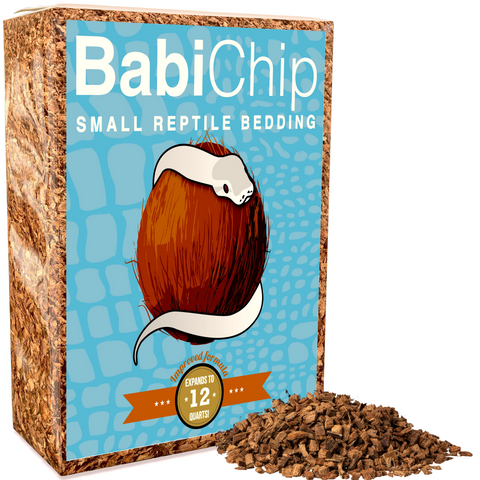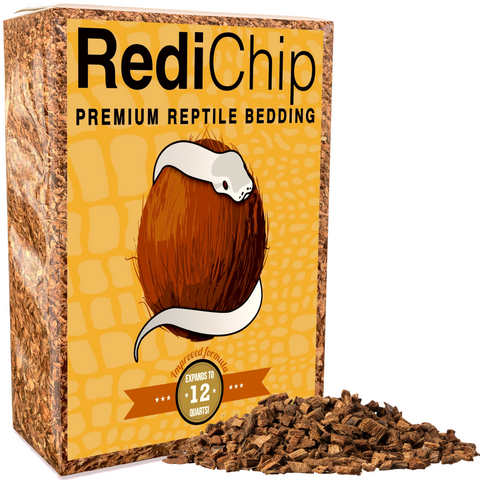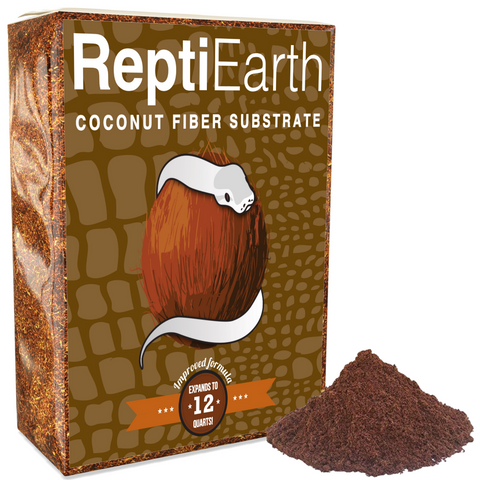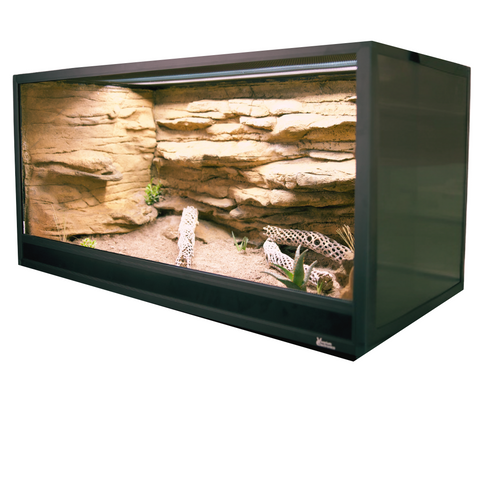Natural History
Red-tailed boas are large, non-venomous constrictors native to Central and South America, where they inhabit a wide range of ecosystems including tropical rainforests, savannas, agricultural areas, and semi-arid regions. Their ability to adapt to different habitats has contributed to their success across such a vast geographic range. The life cycle of the red-tailed boa begins when a female gives birth to live young—a trait that sets them apart from many other snake species that lay eggs. The gestation period ranges from four to eight months, depending on environmental conditions such as temperature and humidity. Rather than eggs being laid in a nest and incubated, the embryos develop within follicular sacs inside the female’s body. A typical litter consists of 15 to 30 neonates, though litters of over 50 have been recorded in large, well-fed females. Hatchlings emerge at around 15 to 20 inches in length and are fully independent from birth, receiving no parental care. They begin feeding on appropriately sized prey within their first few weeks of life.
Growth is relatively rapid during the first few years, with boas potentially reaching lengths of four to six feet by the age of three. As with most reptiles, their growth continues throughout their life, albeit at a slower rate as they age. Adult red-tailed boas typically range from five to seven feet, with females generally larger and heavier-bodied than males. Males are sexually mature by about 2.5 to 3 years of age, while females may take slightly longer, reaching full reproductive maturity between 3.5 and 4.5 years. In the wild, life expectancy is estimated at 15 to 20 years, although individuals in captivity have been known to live beyond 30 years under optimal care.
Red-tailed boas are primarily solitary and engage in specific behaviors that shift according to age, habitat, and seasonal factors. They are primarily nocturnal or crepuscular, becoming most active during the early mornings and late evenings when temperatures are moderate. During hot or dry periods, they may alter their behavior or seek shelter in hollow logs, burrows, or dense vegetation to conserve moisture and regulate body temperature. These boas are ambush predators, relying on their excellent camouflage, patience, and heat-sensing labial pits to locate and subdue prey. They remain motionless, often coiled in concealed locations, striking quickly when an animal comes within range. Once captured, they constrict their prey with powerful muscular coils, resulting in circulatory arrest before ingestion.
Their diet is highly variable and shifts with age and size. Juveniles may consume small rodents, lizards, birds, and amphibians, while adults are capable of overpowering much larger prey, including opossums, monkeys, large birds, and even domestic animals where human settlements encroach into their habitat. Red-tailed boas exhibit relatively low-frequency feeding strategies, often going weeks or even months between meals in the wild, particularly after consuming large prey items.
Territoriality is not strongly developed in red-tailed boas, though individuals will compete for space or mates under specific conditions. During the breeding season, males will track receptive females using chemosensory cues and may engage in ritualized combat with rival males involving body pressing and attempts to push the opponent down. Despite their solitary inclinations, they may share basking or shelter sites occasionally, especially in areas with limited resources.
Ecologically, red-tailed boas serve as apex mesopredators within many of their native environments. By controlling populations of small mammals, birds, and other prey species, they help maintain ecological balance and prevent overpopulation-driven habitat degradation. In agricultural regions, they may provide natural pest control by regulating rodent populations that would otherwise damage crops or stored grains. In turn, red-tailed boas themselves are preyed upon by larger carnivores such as jaguars, caimans, and birds of prey. Egg and neonate predation by mammals, birds, and even other snakes is common, contributing to a high juvenile mortality rate.
Their coloration and pattern—blotched saddle markings over a base of tan or gray—enable them to blend into a variety of forested and open environments, aiding both in hunting and evading predators. Heat-sensing pits on the upper jaws help detect warm-blooded prey even in total darkness, a crucial adaptation for nocturnal hunting. Additionally, their semi-arboreal nature allows them to exploit a range of vertical habitats, especially as juveniles, which tend to spend more time in trees and shrubs to avoid ground-dwelling predators. As they mature and grow heavier, they become increasingly terrestrial.
Understanding the complex natural history, ecological adaptations, and behavioral ecology of the red-tailed boa is vital for any reptile keeper seeking to provide ethical and informed care for this remarkable species in captivity. These animals are more than striking display reptiles—they represent a finely tuned evolutionary product of their environment, deserving of respect and proper husbandry that reflects their natural origins.
Conservation Status
The Red-Tailed Boa is currently classified as "Least Concern" on the International Union for Conservation of Nature (IUCN) Red List. This status indicates that, despite some threats in localized areas, the overall population of the species remains stable and widespread across its native range. The species has a broad geographic distribution throughout Central and South America, including countries such as Brazil, Colombia, Suriname, and parts of the Caribbean. Its ability to thrive in a variety of habitats, from tropical rainforests and savannas to agricultural zones and edge habitats near human development, contributes significantly to its population resilience. While certain populations may face pressure from environmental changes, the species as a whole is not currently considered to be at immediate risk of extinction.
Primary threats to the Red-Tailed Boa in the wild include habitat destruction, illegal wildlife trade, and road mortality. Deforestation is a leading concern, particularly in the Amazon Basin, where slash-and-burn agriculture, logging, and infrastructure development reduce the availability of suitable habitat. Although this species is adaptable, significant loss of forest canopy and prey availability can impact local populations. The pet trade also presents a threat; while many of the snakes in captivity are now bred in controlled settings, illegal poaching of wild specimens still occurs in some regions. In addition, Red-Tailed Boas are frequently killed by humans out of fear or misunderstanding, especially in suburban and rural areas where these snakes may occasionally enter populated zones. Vehicle collisions represent another mortality factor in areas where roads bisect their natural habitat.
Conservation efforts for the Red-Tailed Boa vary by region but generally focus on habitat preservation, legal protection, and sustainable trade practices. In many countries where this species is native, it is protected under national wildlife laws that regulate hunting, trade, and captive keeping. Internationally, this boa is listed on Appendix II of CITES (the Convention on International Trade in Endangered Species of Wild Fauna and Flora), which means that although it is not currently considered threatened with extinction, its trade must be controlled to avoid utilization incompatible with its survival. This listing requires that any international trade is limited to animals bred in captivity or collected under regulated permits.
Captive breeding programs have played an essential role in both conservation and reducing pressure on wild populations. The Red-Tailed Boa is one of the most successfully bred large constrictors in captivity. Commercial and private breeders have developed established breeding lines that not only meet the demand for pets but also reduce the incentive to harvest individuals from the wild. In some regions, captive breeding has contributed to local conservation awareness and funding for habitat protection. Although formal reintroduction programs are limited, maintaining genetic diversity through captive populations serves as a conservation safeguard should wild numbers decline in the future.
Habitat reserves and ecotourism also support the species' long-term survival. Protected areas in countries like Brazil, Belize, and Costa Rica offer crucial refuges where Red-Tailed Boas can exist with minimal human disturbance. Some conservation NGOs work with local communities to implement land-use practices that are compatible with wildlife conservation, supporting both biodiversity and sustainable livelihoods. Ongoing research into the species’ ecology, reproductive biology, and regional population health continues to be vital for informed conservation management. While currently not endangered, the Red-Tailed Boa benefits from proactive conservation strategies that can mitigate future threats and ensure this iconic species remains a stable component of its ecosystems.
Native Range
The red-tailed boa is native to a wide range across tropical regions of Central and South America. Its distribution extends from northern Mexico through Central America—including countries such as Belize, Guatemala, Honduras, Nicaragua, Costa Rica, and Panama—into northern and central South America. Within South America, it is commonly found in Colombia, Venezuela, Guyana, Suriname, French Guiana, Brazil, Peru, Ecuador, Bolivia, and parts of northern Argentina. This species has one of the broadest ranges among large constrictor snakes, though isolated populations may exhibit slight differences in coloration, size, and environmental adaptation depending on locality.
In terms of macrohabitat, the red-tailed boa primarily inhabits tropical rainforests and humid lowland environments. These ecosystems are characterized by high tree density, multi-layered canopy structure, and abundant undergrowth, all of which offer both shelter and hunting opportunities. Besides rainforests, this species can also be found in other moist environments such as riparian woodlands, seasonally flooded wetlands, and semi-deciduous forests. In drier parts of its range, it may also utilize savannas or scrubland adjacent to forested areas, especially where there is access to nearby water.
On a microhabitat scale, red-tailed boas are versatile but selective. They frequently take refuge under dense leaf litter, within the hollow trunks of fallen trees, beneath forest debris, or inside abandoned mammal burrows. Juveniles often inhabit arboreal or semi-arboreal microhabitats, favoring low branches or vines where they are protected from ground-level predators. Adults are more terrestrial but may still climb into low vegetation or trees, especially when hunting or seeking thermoregulation opportunities. Rocky outcroppings, riverbanks, and areas with thick ground cover are also critical microhabitats, offering both thermal gradients and concealment.
Climatically, the red-tailed boa favors warm, humid conditions. Average daytime temperatures in its native habitat typically range between 78°F and 90°F, with nighttime lows seldom falling below 70°F. Relative humidity is generally high, often ranging between 70% and 90%, depending on the region and season. Areas of high precipitation are common, with annual rainfall often exceeding 80 inches. However, pronounced wet and dry seasons occur throughout much of its range and can impact the snake’s activity levels, feeding behavior, and reproductive cycles. During wetter months, it may be more active and visible, whereas in drier seasons, it may retreat to deeper cover or enter temporary periods of inactivity.
In terms of elevational distribution, this species is primarily found from sea level up to elevations of around 3,000 feet. While most common in lowland tropical forests, it can tolerate mid-elevation environments, particularly in regions with consistent warmth and humidity. Its distribution becomes more sporadic at higher altitudes, where temperature and environmental conditions may be less favorable for a large ectothermic predator.
Key environmental factors critical to this species’ survival include plentiful access to water, both for hydration and for maintaining appropriate humidity levels. Proximity to permanent or seasonal streams, rivers, and wetlands enhances prey availability and provides refuge. Dense vegetation—ranging from palm understories to tangled vines and shrubs—offers essential cover for ambush hunting and protection from predators. Substrates such as moist earth, leaf litter, or lightly compacted sandy soils support burrowing and thermoregulation behaviors. The red-tailed boa's ability to exploit a wide variety of ecological niches within this macrohabitat contributes to its success across such a vast and diverse range.
Behavior
The red-tailed boa is a primarily nocturnal species, exhibiting peak activity during the early night hours. In its natural environment, which includes humid lowland rainforests, open savannahs, and arid scrublands across much of Central and South America, its behavior is influenced heavily by seasonal temperature and humidity changes. During warmer, wetter months, individuals are more active and may be seen traveling in search of food or mates. The onset of the dry season often signals a reduction in activity, with some individuals entering a state of dormancy or brumation in cooler regions. In captivity, this species retains its nocturnal tendencies, often remaining motionless during daylight hours and becoming more mobile after dusk, particularly when hunting or exploring its enclosure.
Red-tailed boas are solitary by nature and do not form social groups outside of the breeding season. They are non-territorial and generally avoid interaction with conspecifics unless mating. During the breeding season, typically timed to cooler months in the wild, males engage in mate-searching behavior, often tracking females via scent trails using their highly sensitive tongue and vomeronasal organ. Courtship involves tongue flicking, body alignment, and caudal rubbing by the male. Multiple males may pursue a single female, but overt aggression is minimal; instead, males may engage in subtle pushing contests. Once copulation occurs, the female retains the sperm and can delay fertilization for several months. Notably, red-tailed boas are ovoviviparous, giving birth to live young rather than laying eggs. This reproductive strategy is relatively rare among snakes and reflects an evolutionary adaptation to their diverse and sometimes unpredictable environments. After parturition, which may result in 15 to 30 neonates, the female offers no parental care.
Environmental stimuli strongly influence red-tailed boa behavior. These snakes rely on infrared-sensitive pits along their upper lips to detect warm-blooded prey in low-light conditions. Their sensory perception is fine-tuned to subtle changes in ambient temperature and humidity, making them responsive to seasonal shifts. In colder weather, they will seek out warmer microhabitats to thermoregulate, occasionally using communal basking sites in the wild. In captivity, they often utilize under-tank heaters or heat lamps coupled with regulated photoperiods to maintain circadian rhythms. Light cycles impact their behavior in captivity, especially breeding readiness, and sudden changes in lighting or environmental stability can cause stress. This species typically displays a startle response when exposed to unexpected stimuli, such as abrupt movement or strong vibrations, often tightening their coils or remaining still in a camouflaging posture. Although generally docile, individuals may hiss and strike when threatened, particularly during shedding or just after waking from brumation, when visibility and responsiveness may be reduced.
A distinguishing trait of the red-tailed boa is its powerful constriction hunting strategy. Once prey is located using scent and heat cues, the snake employs an ambush tactic, lunging and grabbing the animal with its sharp, rear-pointing teeth before rapidly coiling its muscular body around the prey. Each breath the prey attempts to take tightens the coils, relying not on crushing but on restricting blood flow and respiration until unconsciousness ensues. This method is both efficient and controlled, helping to reduce injury risk to the snake. Red-tailed boas typically consume medium-sized mammals and birds in the wild, such as rodents and opossums. In captivity, rats are the preferred staple, adjusted in size to match the snake's girth.
Defensively, red-tailed boas exhibit excellent camouflage due to their cryptic coloration, blending seamlessly into leaf litter and forest underbrush. Young individuals are more likely to display defensive behaviors such as mock strikes or adopting an S-coil defensive posture, while adults often rely on their size and calm demeanor to deter predators. Though nonvenomous, their muscular body and impressive size provide a strong deterrent. They are also known for their ability to climb in early life stages and swim effectively at all sizes, using lateral undulation through water and trees to escape threats or access prey.
In captivity, behavioral expressions are generally more subdued due to the lack of predators and consistent food availability. Feeding responses tend to be heightened in captive red-tailed boas, likely due to routine schedules that allow anticipation of meals. However, this can lead to overfeeding if not carefully managed. Captive individuals may exhibit food aggression, especially if feeding cues are consistently presented outside of specific zones or handling protocols. Enrichment plays a key role in maintaining appropriate behavior in captivity; providing climbing branches, variable substrates, hides, and rotational feeding strategies can help prevent boredom and reduce stress. Aggression between individuals is rarely observed in the wild but may occur if multiple boas are housed together, which is discouraged except during controlled breeding attempts. Captive red-tailed boas can develop stress responses, such as refusal to eat, excessive hiding, or increased defensive posturing, when exposed to persistent environmental instability, inadequate enclosure conditions, or excessive handling.
Overall, the behavioral repertoire of the red-tailed boa is characterized by adaptability, stealth, and controlled aggression. Its relatively placid nature in captivity, coupled with its strong reaction to environmental changes, underscores the importance of replicating key elements of its natural ecology to ensure health and wellbeing in captivity.
Captivity Requirements
Enclosure Design
Red-tailed boas require spacious, secure enclosures that replicate their native tropical environments of South and Central America. Juvenile specimens less than 3 feet in length can be housed in enclosures measuring at least 3 feet long, 1.5 feet wide, and 1.5 feet high. However, these dimensions should only be considered temporary. As the snake grows, it requires significantly more space. Adults, particularly females that can exceed 7 feet in length, should be housed in enclosures no smaller than 6 feet long, 2.5 feet wide, and 2 feet high. For larger individuals, custom enclosures of 8 feet or longer may be necessary to ensure adequate movement and environmental complexity.
Enclosures can be constructed from PVC, high-density polyethylene (HDPE), or sealed wood with a waterproof lining. All materials should be chosen with consideration for heat retention, resistance to humidity, and ease of cleaning. PVC is preferred due to its durability, insulation properties, and resistance to mold under high humidity. The enclosure must include multiple ventilation points to prevent stagnant air and reduce the risk of respiratory infections. These vents should be strategically placed to allow cross ventilation without compromising humidity retention.
The layout must include elements that reflect rainforest and tropical deciduous forest habitats. This includes sturdy climbing branches capable of supporting the snake’s weight, as red-tailed boas are semi-arboreal, particularly in their juvenile stages. Multiple hiding spots should be provided at both the cool and warm ends of the thermal gradient, using cork rounds, half logs, or secure plastic hides. A stable basking platform with overhead heat should be included on the warmer end. The enclosure must also be escape-proof, with locking front-sided doors or tight-fitting lid clasps, as boas are strong and highly adept at pushing through poorly secured openings.
Lighting and Heating
Red-tailed boas require a clearly defined thermal gradient within their enclosure to facilitate thermoregulation. The basking area should be kept between 88°F and 92°F, achieved with a radiant heat panel or ceramic heat emitter directed at a basking platform. The ambient temperature in the warm side of the enclosure should remain around 82°F to 85°F, while the cool side should stay between 75°F and 78°F. Nighttime temperatures may drop to a minimum of 72°F, never lower. All heating elements must be regulated by a high-quality, probe-based thermostat to prevent overheating and burns. Under no circumstances should a heat rock be used.
Although not considered a strict heliothermic species, red-tailed boas benefit significantly from access to UVB lighting. A UVB lamp rated at 5% to 7% should be used, ideally a linear T5 HO fixture that spans at least half the length of the enclosure. The UVB lamp should be mounted inside the enclosure, 12 to 18 inches from the basking area, without obstruction from glass or plastic. Exposure to UVB assists in calcium metabolism, supports natural behavior, and may reduce the risk of metabolic bone disease, especially in younger animals.
A photoperiod of 12 hours of light followed by 12 hours of darkness is ideal throughout most of the year. Seasonal adjustments can be made to mirror a natural cycle, such as extending dark periods slightly during winter months. Providing consistent lighting cues helps maintain the reptile’s circadian rhythms and supports long-term health and reproductive function.
Substrate and Enrichment
The preferred substrate for red-tailed boas in captivity should closely resemble the moist soils of their natural habitat while also maintaining cleanliness and reducing impaction risk. A deep layer (3–6 inches) of ReptiChip is ideal, as it combines moisture retention, odor control, and safety. These chipped coconut substrates mimic leaf litter and forest floor conditions found in tropical regions. For keepers preferring a finer substrate, a mix of ReptiEarth and ReptiChip products can create an optimal blend of burrowable yet low-dust material. Avoid loose sand, bark chips, and any substrate that risks ingestion and subsequent impaction. Reptile carpet should never be used, as it inhibits natural behaviors, harbors bacteria, and can cause scale damage.
Red-tailed boas are intelligent and benefit from environmental enrichment that encourages natural activities such as climbing, coiling, ambush hunting, and exploratory behavior. Heavy-duty horizontal and vertical branches provide climbing opportunities, especially crucial for juvenile boas that are more arboreal. Multiple hides scattered across the temperature gradient allow the snake to feel secure while choosing a comfortable microclimate. Large water basins may serve dual purposes, as boas will soak, particularly during pre-shed periods. Naturalistic elements such as textured cork bark, live or artificial plants (secured to prevent collapse), and partially buried decor enhance visual barriers and create a more stimulating environment. Rotate furnishings periodically to reduce enclosure boredom and encourage exploration.
Humidity and Hydration
Maintaining appropriate humidity is essential for the health of a red-tailed boa. Ideal humidity levels range from 55% to 70%, with temporary increases up to 80% during shedding cycles. Persistent low humidity results in shedding problems, dehydration, and respiratory distress. These levels can be maintained using humidity-retentive substrates such as ReptiChip and ReptiEarth mixes, coupled with regular misting sessions. Light misting of the enclosure once or twice daily is typically sufficient, though adjustments should be made based on real-time monitoring. Ensure the enclosure is not over-saturated, as standing water can promote bacterial growth and skin infections.
For enclosures in particularly dry climates, the use of an ultrasonic fogger connected to a timer or humidity controller can help maintain consistent levels. Adding a humidity box—a hide filled with damp sphagnum moss—at the cool end of the enclosure provides an optional microclimate during shed periods. Enclosure ventilation should balance airflow without excessively drying the habitat.
Hydration is primarily provided through a large, heavy water bowl capable of allowing the snake to submerge its body. Water should be changed daily and the basin cleaned frequently to avoid bacterial contamination. Additionally, red-tailed boas readily drink water droplets during misting. Observations often reveal the snake licking water off branches and enclosure walls shortly after misting, reflecting natural drinking behaviors recorded in the wild.
Digital hygrometers with dual-point probes are the most accurate method of monitoring ambient and localized humidity. Place one sensor at the warm end and another close to the substrate on the cool side to ensure proper distribution. Maintaining consistent access to fresh water and a well-regulated humidity gradient is critical to supporting the boa’s hydration, thermoregulation, and overall health.
Diet & Supplementation
In its native range, the red-tailed boa is a carnivorous species that relies largely on a diet of vertebrate prey. As a generalist predator, it consumes a wide variety of animals depending on its geographic location, age, and individual size. Juveniles tend to focus on smaller prey such as lizards, amphibians, small birds, and rodents, while adult boas feed on larger mammals and birds, including rats, opossums, mongooses, and occasionally bats. Wild boas often hunt in forests, agricultural areas, and near water sources, taking advantage of their cryptic coloration and ambush hunting strategy to surprise prey at close range.
The red-tailed boa is an ambush predator, relying primarily on stealth, chemical cues, and heat-sensing abilities to locate food. It possesses labial pits along the upper jaw that allow it to detect infrared radiation emitted by warm-blooded animals, a key adaptation that aids in the detection of endothermic prey in low-light conditions. This is coupled with its highly developed vomeronasal organ, which interprets chemical signals via tongue-flicking. Once a target is within striking range, the boa uses a rapid and powerful strike to seize it with backward-curving teeth. The snake then wraps its body around the prey and applies constriction to stop circulation and induce suffocation. Once the prey expires, it is consumed head-first.
Dietary habits alter with age and environmental circumstances. Young red-tailed boas must eat more frequently relative to their size and metabolic rate, usually every 7 to 10 days, while adults may eat only once every few weeks, especially after a large meal. Seasonal changes also influence feeding behavior; during the cooler or drier months in some parts of their range, feeding slows or ceases altogether due to lower prey availability and metabolic shifts. Reproductive females may fast during ovulation or gravidity, relying on fat stores to support gestation.
In captivity, red-tailed boas must be fed a nutritionally complete diet that approximates the nutritional profile of their natural prey. Most keepers feed them pre-killed or frozen-thawed rodents and small rabbits, depending on the size of the snake. Mice and rats are commonly used because of availability and ease of storage, but it is important to offer appropriately sized prey that matches the widest part of the snake’s body. A general rule is to feed an item approximately equal to the girth of the snake mid-body. While rats are suitable for most adult boas, young specimens may begin with hopper or adult mice. Variety is important to prevent nutritional gaps, so alternating prey items—such as quail or chicks—can help replicate elements of the natural diet and stimulate feeding responses.
Because captive diets are often less varied than those in the wild, supplementation may be necessary. While whole prey provides a balanced nutrient profile, certain captive-raised rodents may have lower-than-ideal levels of calcium or vitamins due to their own diets. Supplementation with vitamin-rich dusts is generally discouraged unless there is a diagnosed deficiency, but gut-loading feeder items or rotating prey sources can be beneficial. Regular monitoring of growth, body condition, and defecation are critical to ensure that the animal is metabolizing its food properly.
Captive red-tailed boas may occasionally experience feeding problems. Food refusal is common during shedding cycles, breeding seasons, or due to inappropriate environmental conditions, such as incorrect temperature or humidity gradients. Chronic refusal may signal more serious issues like respiratory infection or parasitic load. Overfeeding is another major concern, as boas can become obese if fed too frequently or given excessively large meals. For adults, feeding once every 14 to 28 days is typically sufficient. Feeding schedules should be tailored based on age, activity level, and body condition, rather than a rigid calendar.
To encourage natural feeding behaviors in captivity, provide environmental enrichment and mimic hunting opportunities. Feeding in the evening or during nocturnal hours aligns with the species' natural activity period. Scenting prey items with different species or using feeding tongs to simulate movement can help stimulate reluctant feeders. Feeding outside the enclosure may reduce substrate ingestion or defensive behavior, while maintaining hygiene. However, each animal responds individually, so keepers should observe feeding responses over time and adjust techniques as needed.
Reproduction
Red-tailed boas reach reproductive maturity at different ages, depending on sex and size. Females generally become sexually mature around 2.5 to 4 years of age when they reach approximately 6 to 8 feet in length and exhibit a robust body condition. Males mature slightly earlier, around 2 to 3 years, at a smaller size of 4 to 6 feet. There is observable sexual dimorphism in this species, with females significantly larger and more muscular than males. Males possess longer, more tapered tails and prominent spurs near the vent—vestigial limbs used during courtship to stimulate the female. In addition to these anatomical differences, males commonly exhibit more frequent tongue flicking and increased movement during breeding season, character traits associated with mate searching.
Courtship in red-tailed boas typically begins with the male detecting female pheromones via his vomeronasal organ. This chemosensory cue initiates tracking and tactile stimulation behaviors. Males align their bodies alongside the female and use their spurs to tickle and massage the female’s flanks—an action that may continue for several hours or even days. If receptive, the female lifts her tail to allow cloacal alignment and copulation. Multiple copulations may occur over several days. Females housed with more than one male may show higher receptivity, and competition between males can stimulate greater courtship vigor, increasing breeding success.
Seasonal environmental cues are essential to triggering reproductive behavior in captivity. In the wild, red-tailed boas breed during the dry season, with ovulation and parturition timed to coincide with seasonal rainfall, which provides favorable conditions for neonate survival. In captivity, these conditions are replicated by simulating a seasonal cooling and reducing the photoperiod. A gradual decrease in daytime and nighttime temperatures, typically dropping night temps to around 75°F while maintaining daytime highs around 82°F, is implemented over several weeks in late fall. Simultaneously, the photoperiod is reduced to around 10 hours of light per day. After a cooling period of 60 to 90 days, temperatures and photoperiod are gradually increased, signaling the transitional season. Humidity should also be slightly reduced during cooling and then increased upon warming. These cues help condition both sexes and induce reproductive readiness.
Red-tailed boas are ovoviviparous, meaning they give birth to live young rather than laying eggs. As such, they do not require nesting sites for egg-laying, but females do require a secure and stress-free environment to support gravid development. Copulation can occur in the primary enclosure if it is large enough and contains appropriate temperature gradients and hiding areas. However, using a dedicated breeding enclosure is recommended to allow close observation and to manage male-to-female interactions more effectively. Pairing should be done cautiously, as persistent rejection by the female, signs of stress, or aggression can occur. Introducing the male into the female's enclosure rather than the reverse often results in better acceptance. Group breeding is not typically recommended, as constant interaction may lead to stress or injuries. A solitary pair with intermittent introductions generally yields higher success rates.
Breeding challenges in captivity include unsuitable environmental conditions, lack of seasonal cycling, and partner incompatibility. If cooling periods are skipped or improperly timed, hormonal cycling may not occur, and breeding behavior will be minimal or absent. Additionally, some boas fail to mate successfully due to size disparities, especially with immature or undersized males. Stress caused by frequent handling, poor enclosure security, or improper space allocation may lead to reproductive suppression. If females do not ovulate or if males are not showing interest, extending the cooling period or offering additional environmental enrichment may help. Providing adequate thermal gradients (ranging between 75°F at the cool end to 88°F at the warm end), low disturbance, and clear breeding cues can enhance pairing success. If repeated pairings fail, rotating males or reassessing health and nutritional status may be necessary. Ensuring both animals are in optimal physical condition prior to breeding is essential for a successful outcome.
Incubation & Neonate Care
The red-tailed boa is an ovoviviparous species, meaning it gives birth to live young rather than laying eggs. This reproductive mode involves internal fertilization, with embryonic development occurring entirely within the mother’s body. The embryos are enclosed in individual sacs filled with amniotic fluid, and they are nourished through a yolk sac rather than a placental connection. After a gestation period typically lasting between 4 to 8 months, depending on environmental conditions and maternal health, the female gives birth to fully formed neonates.
During the latter stages of gestation, it is crucial to provide the female with a clean, low-stress environment with minimal handling. Optimal ambient temperature within the enclosure should be maintained around 82 to 88°F with a slight drop at night to approximately 78 to 80°F. Humidity should remain in the range of 60% to 70% to prevent dehydration and facilitate healthy gestation. Adequate access to fresh water is essential for hydration. A large, enclosed hide area should be made available near the warmer end of the thermal gradient to allow the gravid female to thermoregulate efficiently. Females typically give birth lying coiled in a secluded portion of the enclosure, often favoring dark, covered areas.
The birthing process can last several hours, during which the mother will expel each neonate encased in a thin, transparent membrane. The neonates usually break through this membrane almost immediately after birth, aided by body movement and assisted by the friction of the substrate. On average, a healthy red-tailed boa litter may consist of 15 to 30 live young, although litter sizes can vary based on the female’s age, size, and health. Stillborn offspring or unfertilized ova (“slugs”) may be present. Dystocia, or difficulty in giving birth, may occur if temperatures are too low, the dam is in poor physical condition, or if the enclosure lacks sufficient privacy and security. If dystocia is suspected, veterinary intervention may be necessary.
Neonates measure approximately 15 to 20 inches in length at birth and are typically robust and alert if healthy. They should be removed from the mother’s enclosure within 24 to 48 hours to prevent stress on the female and avoid any accidental injury from cohabitation. Each neonate should be placed in a separate enclosure or housed in small, same-size groups with diligent monitoring to prevent aggression or competition. Neonate enclosures should maintain a daytime ambient air temperature of 80 to 85°F with a basking spot around 88°F and a nighttime drop to 75 to 78°F. Humidity should be retained at 65% to 70% to support proper shedding and hydration, especially during the initial postnatal shed.
Appropriate enclosures for neonates can be simple, such as plastic tubs or small terrariums with secure lids to prevent escape. Paper towel or unprinted newspaper can be used as substrate for ease of cleaning. Fresh water should be available in a shallow, stable dish, and high humidity levels can be maintained through misting and adequate ventilation balance. Neonates typically undergo their first shed within 7 to 12 days after birth, after which their first meal can be offered. Hatchlings generally accept pinky rats or fuzzy mice, depending on individual size, and should be fed once every 5 to 7 days. Feeding should always be monitored, as regurgitation can occur if prey is too large or temperatures are too low.
Handling should be minimized during the first few weeks to allow the snakes to acclimate and establish a consistent feeding response. Once feeding regularly, neonates can be gently handled for short periods to support long-term taming. It is important to monitor for common health problems such as retained shed, dehydration, incomplete feeding response, and respiratory issues, which are often linked to poor husbandry. With proper care, red-tailed boa neonates typically grow steadily and can double their birth size within a few months. Regular cleaning, consistent environmental parameters, and attentive monitoring will ensure successful development during these early life stages.
Conclusion
Successfully maintaining a red-tailed boa in captivity requires a nuanced understanding of its intricate biology, ecological adaptations, and behavioral needs. As one of the most robust and widely distributed large constrictor species in the Neotropics, this snake is capable of thriving under human care, provided its environmental, dietary, and psychological requirements are carefully met. From the moment of birth, red-tailed boas are independent, highly capable animals with distinct needs that evolve with age and size. Captive keepers must be prepared to accommodate these changes with incremental habitat upgrades, progressively larger prey items, and nuanced attention to temperament, developmental milestones, and health indicators.
Environmental replication is foundational to the boa’s well-being in captivity. Exposure to a stable thermal gradient, consistent humidity levels, and a photoperiod that mimics seasonal changes support proper metabolic and reproductive function. Enclosure design must reflect their natural preference for secure, shaded microhabitats with access to vertical space—especially in juveniles—and provide opportunities for climbing, coiling, and resting in both cooler and warmer zones. As snakes highly sensitive to environmental stimuli, red-tailed boas respond readily to changes in temperature, humidity, light exposure, and feeding schedules. Keepers who establish a stable, enriched environment can expect these animals to exhibit natural behaviors, achieve optimal growth rates, and express robust health.
Feeding must be approached with precision, ensuring prey size and frequency are tailored to the snake’s age, condition, and activity level. While highly food motivated, red-tailed boas are not designed for continuous feeding and are susceptible to obesity and metabolic stress if overfed. A balanced, varied diet and strict feeding regimen are essential in avoiding long-term complications. Hydration and shedding health hinge upon adequate environmental moisture, making humidity control a critical component of daily husbandry. Moreover, the species’ viviparous reproductive strategy—though strikingly unique—requires both environmental stability and careful pairing management when captive breeding is attempted.
Behaviorally, red-tailed boas are generally tractable animals preferring solitude and exhibiting minimal aggression when properly housed and handled. However, chronic stress due to invalid husbandry or poor handling practices can result in defensive behavior, health deterioration, and reproductive suppression. These snakes exhibit strong behavioral rhythms tied to their crepuscular and nocturnal tendencies, and their innate reliance on environmental cues demands a husbandry model that respects their natural biology rather than forcing adaptation to human convenience. Observation, patience, and respect for the snake’s visual, olfactory, and thermal perception are indispensable for interpreting behavioral states and making informed husbandry decisions.
Red-tailed boas play an essential role in their native ecosystems as mid-level predators that regulate small mammal and bird populations. They are emblematic of the ecological complexity found in neotropical biomes and, in captivity, serve as ambassadors for rainforest conservation and herpetological education. While current wild populations remain stable at the global scale, habitat loss and illegal trade in some regions underscore the importance of captive breeding programs and ethical ownership. Those who choose to keep red-tailed boas must do so with a deep commitment to replicating the conditions required for these complex and long-lived reptiles to thrive.
In conclusion, the successful care of a red-tailed boa demands far more than basic reptile ownership—it requires an investment in knowledge, environmental precision, and long-term commitment. For keepers willing to meet these standards, red-tailed boas offer not only a rewarding experience but a window into one of the most ecologically versatile and behaviorally fascinating snakes in the animal kingdom.
















